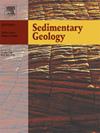The source and preservation of lacustrine shale organic matter: Insights from the Qingshankou Formation in the Changling Sag, Southern Songliao Basin, China
Abstract
Organic-rich shale in the Cretaceous succession of the large non-marine Songliao Basin in northeastern China, especially the Qingshankou Formation of the Turonian and Coniacian stages, provides a unique record for studying the role of global climate control on organic matter accumulation. Organic enrichment in the Qingshankou Formation along the Southeastern Uplift of the basin has been widely reported and is implicated in the formation of algal blooming and a saline anoxic water environment. However, studies on the Qingshankou Formation in the Changling Sag are relatively few, which leaves a significant gap to understand the controlling factors of organic enrichment at a basin scale. In this study, the sedimentary environment of the first member of the Upper Cretaceous Qingshankou Formation (K2qn1) is reconstructed from petrological and geochemical data to discuss the sources and preservation mechanisms of lacustrine shale organic matter in the Changling Sag (southern Songliao Basin). The K2qn1 is subdivided into three stratigraphic units: Sq1 phase, Sq2 phase, and Sq3 phase. Biomarker (abundance of tricyclic terpane and regular steranes) and petrographical (maceral composition) data indicate that the organic matter in K2qn1 was mainly from terrigenous plants, with some algal input. Inorganic minerals (major and trace elements) and petrological (framboidal pyrite size) data suggest a humid climate and saline anoxic water environment at the Changling Sag during the most organic-rich Sq1 phase. During the Sq2 and Sq3 phases, a relative low lake level and semi-arid climatic conditions likely prevailed. Moreover, these results imply that apart from a saline anoxic water environment, the persistence of continentally derived organic matter in lacustrine shale is mainly controlled by clay minerals. Accordingly, this study proposed a new enrichment model for lacustrine shale organic matter. The new model complements existing lacustrine shale sedimentary models for sources of organic matter and emphasizes the role of clay minerals in preserving organic matter.

 求助内容:
求助内容: 应助结果提醒方式:
应助结果提醒方式:


